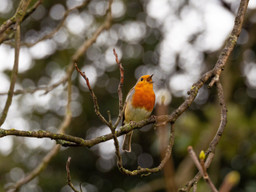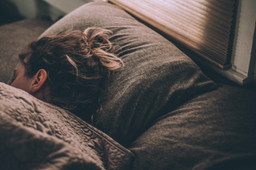
The best sounds and noises for quality sleep
There are many reasons to search for the best sounds to help you sleep. A loud city, noisy neighbors, or a long to-do list occupying your thoughts can all cause you to toss and turn in your bed, instead of drifting off into sweet dreams.
Whatever the case, know that you have company — and that needs to change. About one in three adults in the US have reported not getting enough rest or sleep every day, and nearly 40% of adults have accidentally fallen asleep during the day at least once a month, due to insufficient night sleep, according to the Centers for Disease Control and Prevention.
So, let’s freshen up the duvet.
From good old white noise to immersive nature sounds, there are many types of sounds and noises to help you fall asleep or sleep through the night.
In this article, we’ll discuss different types of sounds and noises and their benefits, and what to pay attention to when using them for a good night’s sleep.
First, we’re here to help you with a list of the best sounds for sleep that are worth sampling:
- White noise
- Pink noise
- Brown noise
- Other colors of noise
- Nature sounds
- Relaxing music
- Meditation sounds
- Binaural beats
- Autonomous sensory meridian response (ASMR)
1. White noise
White noise contains every frequency in the spectrum of sounds audible to the human ear, all with equal intensity.
Examples of sounds similar to white noise include the sound of a vacuum cleaner, air conditioner, fan, air purifier, or TV and radio static.
Even if you don’t have a child, you may have heard that white noise helps parents who struggle to get their babies to sleep. Science backs this up: In a study with two groups of 20 newborns, 16 fell asleep within five minutes of white noise starting. In another study, white noise proved to be more effective for preterm infant weight gain than their mothers’ voices.
Listen to earth.fm’s ‘Best Sounds for Baby Sleep’ playlist! 👶🌛
Adults also react well to white noise, in the context of sleep. In a study of adults who had difficulty sleeping due to high levels of environmental noise (in no less a place than New York, the city that never sleeps), the data showed that white noise greatly improved their sleep.

2. Pink noise
Though pink noise sounds very similar to white noise, it has a lower pitch, with more power in the lowest frequencies, which we often perceive as relaxing or soothing.
Examples of sounds similar to pink noise include rain sounds, ocean waves and surf on a beach, and wind sounds.
Pink noise could be a winner for you, as it has been shown to be helpful for both daytime naps and nocturnal sleep, by “reducing brain wave complexity and inducing more stable sleep time to improve sleep quality of individuals”.
3. Brown noise
Brown noise has nothing to do with the color brown.
It is also known as Brownian noise because its sound signal mimics a Brownian pattern, itself named after Scottish botanist and paleobotanist Robert Brown, who made important contributions to these fields through his pioneering use of the microscope.
This type is alternatively known as red noise, in reference to the shape of the power spectrum. Pink noise has a power spectrum which means that visible light appears pink, with a substantial amount of power at higher frequencies. In red/brown noise, low frequencies are played at a louder level, and the high frequencies at a softer level.

Examples of sounds similar to brown noise include heavy rain, thunderstorms, strong wind, and waterfalls.
Brown noise has not been studied as much as the other color noises, but, as The New York Times has reported, it has a substantial fan base on the internet. Experts also say that Brown noise is not likely to cause harm, even if listened to for eight hours at a time—as long as it is kept at a safe volume (under 70 decibels [dB]).
4. Other colors of noise
Let’s briefly mention a few other color types of noise as these are even less researched than brown noise and much less than white or pink noise. These include:
- Blue noise
- Violet noise
- Gray noise
- Orange noise
- Black noise
- Green noise
- Noisy white
- Noisy black
Blue noise’s power density increases by 3.01 dB per octave over a finite frequency range. This means that our human ears perceive it as a sharp hissing sound. An example of blue noise is the sound of a hose or water spray.
Violet (or purple) noise has a power density that increases by 6.02 dB per octave, so to us, it’s perceived as higher pitched than blue noise. A common example of violet noise is the sound of an open water faucet.
Gray noise gives the impression that it is equally loud at all frequencies, whereas white noise truly has equal strength over a linear scale of frequencies. For this reason, gray noise sounds similar to staticky white noise.
Lastly, you may encounter other terms that lack a scientifically agreed definition, such as orange, black, and green noise, and noisy white and noisy black.
Orange noise is sometimes described as out-of-tune, as it excludes all the frequencies that make a specific musical note. Black noise is essentially silence, a lack of noise. Green noise, in certain spheres, is used to describe nature sounds, while noisy white and noisy black are common terms in telecommunication, referring to the nonuniformity in the black area of the image in the form of black spots.
Although not formally defined by science, blue, violet, gray, and green noise may be beneficial for some of us — or even black noise if you prefer to drift off in silence.

5. Nature sounds
Nature sounds are a beautiful bouquet of different colors of noise. Often referred to as green noise (which has powerful mid-range frequencies), this refers either to nature sounds experienced, for instance, during a walk in a forest, recordings of nature ambiance made by sound artists, or artificial sounds that mimic natural sounds like ocean waves.
You may have noticed that some of these natural sounds were also listed as examples of pink noise. And, yes, pink noise also sounds ‘natural’, as it also centers around mid-range and lower frequencies.
Listen to earth.fm’s ‘Best Nature Sounds for Sleep’ playlist! 🌳 🎧
Nature sounds help us relax
In collaboration with audio-visual artist Mark Ware, researchers from the Brighton and Sussex Medical School conducted a study where participants listened to both natural and artificial sounds:
“When listening to natural sounds, the brain connectivity reflected an outward-directed focus of attention; when listening to artificial sounds, the brain connectivity reflected an inward-directed focus of attention, similar to states observed in anxiety, post-traumatic stress disorder and depression. There was also an increase in rest-digest nervous system activity (associated with relaxation of the body) when listening to natural compared with artificial sounds, and better performance in an external attentional monitoring task.”
Since nature sounds can help put you into a relaxed state, their benefits for falling asleep seem likely.
Nature sounds help us sleep better
An earlier study investigated how ocean sounds positively affected the night sleep pattern of patients after a coronary artery bypass graft procedure (to treat coronary heart disease), having been transferred from the intensive care unit.
While none of the subjects reported any difference in their experience of falling asleep, the group receiving ocean sounds reported improvements to sleep depth, awakening, return to sleep, and quality of sleep — all indications of better sleep.
Nature sounds help eliminate pain and anxiety
Nature sounds are so powerful that they can also work the other way around, not only helping us relax but even taking away pain and anxiety, well-known enemies of good sleep.
In a 2015 study of 57 mothers who had undergone cesarean section, participants listening to nature-based sounds experienced “significantly lower pain severity”, and the reduction of pain was “more evident progressively in 15 and 60 minutes after the end of intervention”. Less pain, more sleep.
Another study assessed patients under mechanical ventilation support. Listening to nature-based sounds led to “significantly lower systolic blood pressure, diastolic blood pressure, anxiety and agitation levels than the control group”, and, again, the results increased progressively after 30, 60, and 90 minutes.
The study concluded that nature sounds “can provide an effective method of decreasing potentially harmful physiological responses arising from anxiety in mechanically ventilated patients”. Less anxiety, better sleep.
Listen to earth.fm’s ‘Best Sleep Sounds for Anxiety’ playlist! ☯️ 🎧
Examples of nature sounds include ocean sounds, rain sounds, and woodland sounds such as recordings of wildlife, birdsong, or a windy forest.
6. Relaxing music
The effect of music on sleep is well-documented for all ages and under many circumstances, so we know that:
- Music therapy for sleeping preterm infants was found to stabilize vital signs such as respiratory rates and oxygen saturations and to possibly promote neurodevelopment.
- Music has also been identified as a promising approach to addressing the sleep disruption that is common among people over the age of 50.
- As for younger people, students between the ages of 19 and 28 experiencing sleep complaints underwent a study to investigate the effect of music on sleep quality. The results were clear: “Relaxing classical music is an effective intervention in reducing sleeping problems.” It was even recommended that “nurses could use this safe, cheap and easy-to-learn method to treat insomnia.”
While classical music is a common sleep-inducing tool, as with other noise types, you need to find the option that works best for you. Relaxing or slower songs of around 60 to 80 beats per minute are recommended — or whatever feels right for you.

7. Meditation sounds
Meditation sounds are likely to be similar to ‘relaxing music’, and have likewise been studied by researchers, whose findings prove that meditation can improve stress, mood, well-being, and sleep in adults.
Mindfulness meditation may mildly improve some sleep parameters in patients with insomnia and can serve as an auxiliary to medication for sleep complaints, while the same was concluded for patients with chronic insomnia.
Simple meditative sounds or guided meditations that talk you through a breathing exercise or body scan, for instance, mean that your chances of falling asleep are extremely good. However, after a few tries, you may find that meditation isn’t up your street and that you would benefit more from something more unusual, like binaural beats.
8. Binaural beats
When you hear a different tone in each ear at the same time – meaning that you are hearing different frequencies simultaneously — these are called binaural beats.
How different should the tones be to qualify as binaural beats? They must have frequencies of less than 1,000 hertz (Hz), and the difference between the two tones can’t be more than 30 Hz.
Though binaural beats can only be experienced through headphones, which aren’t helpful for sleeping, scientific evidence supports their effectiveness in helping one to fall asleep.
A study found that exposure to music containing binaural beats prior to bed is likely to reduce hyper-arousal state (a condition that makes it harder for sufferers to switch off and fall asleep and disrupts the ability to go back to sleep after waking during the night), contributing to sleep induction.
In another experiment, binaural beats also improved the perceived sleep quality and post-sleep state of athletes.
Last but not least, a study found a possible beneficial effect of binaural beats on the induction of sleep when combined with autonomous sensory meridian response — bringing us to our next point.
9. Autonomous sensory meridian response (ASMR)
ASMR is commonly described as a tingling sensation or a ‘goosebump’ feeling triggered by sound-based or visual stimuli, or both — the perfect combination for the ASMR genre to have a successful YouTube ‘career’.
Examples of ASMR sounds include whispering, scratching, humming, chewing, tapping, typing, turning a page in a book, and squishing or crunching sounds.
A study that used both classical music and ASMR auditory stimulus showed that ASMR can produce a relaxed state even when limited to its auditory component.
Though it is documented that most people react to ASMR — for instance, in one study 75% of respondents experienced it in response to whispering, while crisp sound earned positive responses from 64%—and others report using ASMR as a tool to induce sleep, there is little proof of its benefits for sleep.
Still, there’s no harm in giving ASMR a chance: you may be one of those that it relaxes and helps fall asleep.

How to use sounds for the best sleep?
In addition to using sounds to help you drift off, here are five tips to optimize your environment for the best quality sleep:
- Limit the sound: While sounds can help you fall asleep, it may be best to set a timer to stop them playing after a while, letting your body carry out its natural night-time activity on its own.
- Use a low volume: Loud sounds can be damaging to your ears (and we don’t think you’d want deafening volumes for relaxation). Noises above 70 dB over a prolonged period may start to damage your hearing, while 120 dB and above can cause immediate harm to your ears.
- Insulate windows: It may not be possible to greatly control environmental sounds, but why not do what you can? Insulate your windows to filter the sounds of the city or your loud neighbors.
- Eliminate or reduce appliance noise: The fridge or air conditioner can be an enemy during a nap if the sounds they emit are too loud for you. If possible, have them looked over by a mechanic and research quiet options when buying new ones.
- Turn off notifications: If you have your phone with you in the bedroom, make sure to activate silent, bedtime, or airplane mode — but it’s even better to get rid of your bright screens for the night, as this can disrupt your sleep-wake cycle or circadian rhythm.
Naturally, a relaxing bedroom and a relaxed, sleep-inducing state aren’t just about sounds. Think of other elements, too, such as a good mattress, steering clear of coffee in the afternoon, avoiding big meals less than a few hours before going to bed, and keeping your bedroom dark, comfortably cool, and dry. These will all help create an environment that aids better sleep.
Finally, remember that we are still learning about the benefits of sounds when it comes to falling asleep and sleeping, so none of the examples mentioned above are guaranteed to work for you.
We respond to sounds individually, whether we are trying to reach a relaxed state, drift off into our dreams, fall back to sleep after waking up, or sleep through the night.
Find your favorite sound to snuggle with! 🤗
Best sounds for sleep FAQs
- Is it better to sleep with sounds?
- Does noise affect your sleep?
- What is the scientifically best sound to sleep to?
Is it better to sleep with sounds?
Interestingly, many people who choose to fall asleep to sounds from their sound machine or an app do so to mask other noises and are not looking for silence. These could be common city noises, from loud ambulances or cars to buzzing air conditioners, while the sound of crickets or cicadas could have the same effect on a city dweller visiting the countryside.
This points to an ancient truth: to each their own. In an ideal world, perhaps, we would sleep in perfectly soundproofed bedrooms — but then, those who need some type of humming sound in the background could quickly become sleep-deprived. This could depend on whether you are a light or a heavy sleeper, or simply on what specific sounds calm you down or wake you up.
Does noise affect your sleep?
The sleep stages that we all (ideally) go through each night — from light to deep sleep and REM (rapid eye movement) sleep — can be affected by different noises. Therefore, it does matter when that ambulance rushes by your window during your sleep. You may not wake up – or you could spend the next hour awake, struggling to go back to sleep.
There also seem to be evolutionary reasons why we are woken up at night by certain noises: “Brief, flexibly timed REM-dense sleep likely evolved because of the threat of predation when humans began sleeping on the ground,” says David Samson, an evolutionary anthropologist at the University of Toronto Mississauga. Similarly, most birds sleep with one eye open and half of their brain awake to remain conscious of the dangers in their environment.
What is the scientifically best sound to sleep to?
So far, sleep studies show conflicting data about the connection between noises and sleep quality. Sleepfoundation.org has a great summary of this:
“One study of the effects of adding sound from an air conditioner in the home found no positive impact on sleep. In another experiment, researchers investigated the effect of broadcasting white noise into the rooms of hospitalized patients and found that white noise improved sleep quality over the course of three nights compared to a control group. A third study of patients who were having trouble sleeping showed that white noise helped them fall asleep 38% more quickly. Given the inconsistent data, the utility of adding background noise may come down to personal preference.”
So, if you are looking for the best sounds for sleep, you’ll need to do your own experiments. See what works for you to find the sounds that make you fall asleep most easily.
Featured image by Kinga Howard
This content is for general information purposes only and is not intended as medical or other professional advice.
Earth.fm is a completely free streaming service of 1000+ nature sounds from around the world, offering natural soundscapes and guided meditations for people who wish to listen to nature, relax, and become more connected. Launched in 2022, Earth.fm is a non-profit and a 1% for the Planet Environmental Partner.
Check out our recordings of nature ambience from sound recordists and artists spanning the globe, our thematic playlists of immersive soundscapes and our Wind Is the Original Radio podcast.
You can join the Earth.fm family by signing up for our newsletter of weekly inspiration for your precious ears, or become a member to enjoy the extra Earth.fm features and goodies and support us on our mission.
Subscription fees contribute to growing our library of authentic nature sounds, research into topics like noise pollution and the connection between nature and mental wellbeing, as well as funding grants that support emerging nature sound recordists from underprivileged communities.
